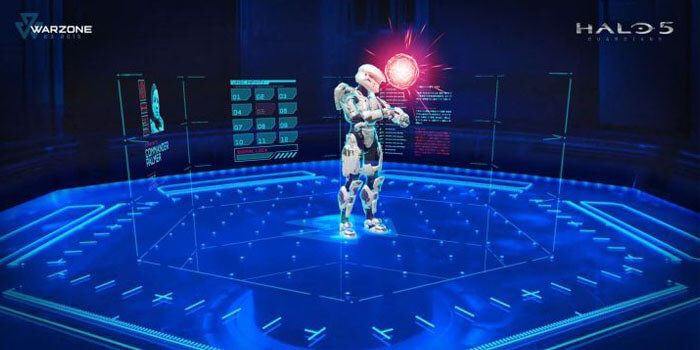One of the coolest demos of Microsoft's entire E3 2015 press conference was a look at Minecraft running on the company's HoloLens device. Allowing players to literally transform their tabletop into a playground, the game seemed perfectly suited to the hologram-centric technology with potential to drastically revolutionize the way we interact with the gaming medium as a whole. In it's current state, however, it's lacking the immersion that its showings thus far have implied.
I was fortunate enough to have the opportunity to try out a Halo-based demo with the HoloLens tech, and what I was able to see showed promise. That said, the limitations of the current screen featured on the device makes it less immersive and more obvious in its execution.
The demo I was given required me to first measure the distance between my pupils before strapping a HoloLens to my head. After having the device placed on my cranium, a waypoint popped up and I was instructed to follow the beacon to its real-world location. This was a very interesting use of the technology as it was able to help me navigate the layout of the actual demo station, and it shows promise for future uses of the platform.
Upon physically walking over to my destination, I was instructed to look at a panel on the wall, which immediately opened up to showcase a hangar from the Halo series filled with the hustle and bustle of an active docking spot. It was an interesting use of the tech, but this is where I first began to realize HoloLens' biggest fault – the limitations brought on by the minute screen featured on the headset.
As I peered into the vastness of a hangar floating around the endless depths of space, the screen that displayed this convincing image continuously cut off the experience I would have otherwise been wholly immersed in. I had to keep adjusting the angle in which I viewed the technological trickery in a bid to experience the image uninterrupted, which immediately made me realize just how tiny the screen on the glasses was.
The virtual window eventually closed up, as I was then instructed to head over to a briefing table. As I stood there, an image of Spartan Sarah Palmer, who made her game debut in Halo 4, popped up and began briefing me on the mission that awaited. Similarly to the aforementioned Minecraft stage demo, the Halo character and a layout of an impending Warzone multiplayer map occupied the entirety of the table, which was impressive to say the least.
Once again, however, the image kept being lobbed off by the tiny screen I was required to look through. As Palmer informed myself and several other members of the press how to go about winning in Halo 5: Guardians' newfound multiplayer mode, I was continuously reminded that I was looking at a screen placed on the HoloLens' glass. As the demo wrapped up, I removed the glasses from my head and I realized I had been more distracted throughout the presentation by what I couldn't see rather than what I could.
In the end, it's still too early to say how much larger the screen featured on HoloLens will wind up being, but in its current state it undoubtedly misses its goal of presenting on-screen holograms in an impactful and worthwhile fashion. Everything that could be viewed managed to impress and show genuine promise, and it's important that users are able to see their surrounding environment while using the goggles, but HoloLens fails to work as advertised in its current build.
HoloLens is currently without a release date, but stay tuned to Game Rant for more details.

